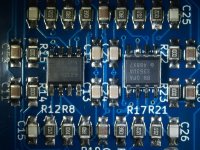i have the essence card too and love it. paired up with focal xs speakers it gives lovely sound.
Totally agree it's a very good sound card indeed, I actually own 2 of them. My Pioneer AMP/DAC still has less interference/background noise then both my Essence ST's however. Nothing wrong with the Asus Essence ST and it will still outclass most consumer sound cards, however I prefer to use my Pioneer AMP/DAC over it. This is on my HiFi setup mentioned above, on my software dev rig I still run one of the Asus ST's.
PS the reason I own 2 Asus Essence ST's is I planned on using one also on my HTPC/Hi-Fi setup, I spent days listening, sleeping in between, listening to different music at 3am in morning, but the Pioneer AMP/DAC won over it, but close enough it took a few days to decide.
I also own a Creative Titanium HD and in comparison to above, it took only 10-15 mins for me to realise the Asus ST was better then the Creative Titanium HD, the quality between the Asus and Creative makes it easy to decide the Asus is better. The main difference between the Creative and Asus is the Creative sounds slightly synthetic, where as the Asus ST has a more honest analogue sound.
Last edited:



 (Even on prototype board though very very little noise (essentially silent unless you scope it) with reasonable grounding and good filtering of inputs signal and power).
(Even on prototype board though very very little noise (essentially silent unless you scope it) with reasonable grounding and good filtering of inputs signal and power).
